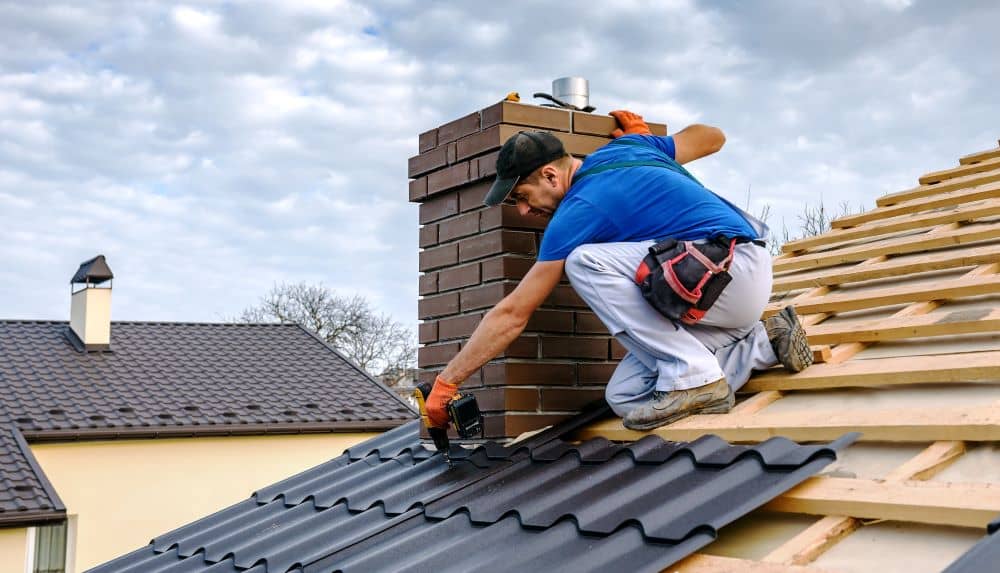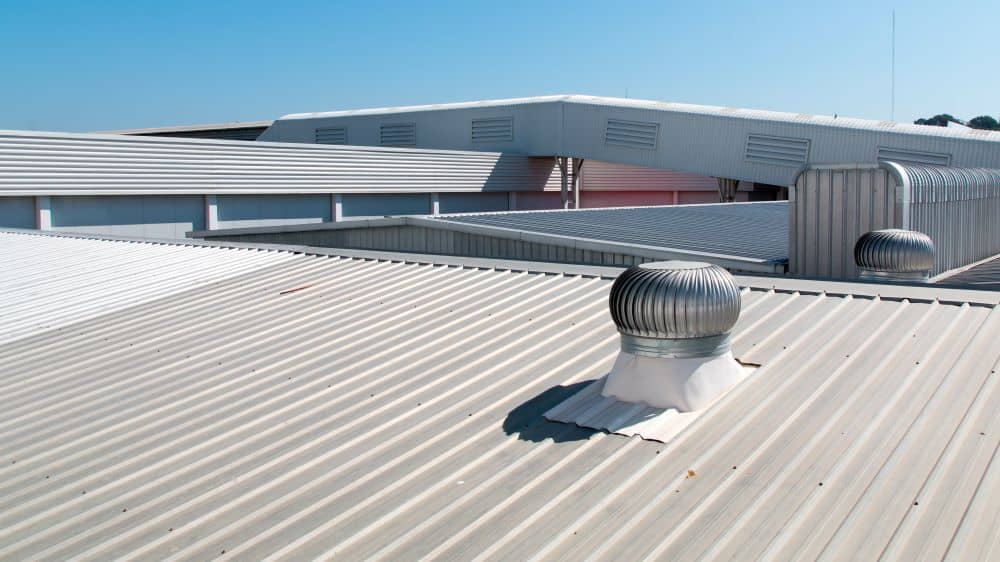Residential vs Commercial Roofing: What Are The Differences?
Many people think roofs are all the same, even when looking at two different types: commercial and residential roofs. Sure, they vary in size and colour, but the difference usually ends there. In reality, these two types are quite distinct. You normally cannot switch the roof you have on your house with the one for your restaurant.
This blog will tell you the differences between residential and commercial roofs.
Installation Process
Let’s begin with how commercial and residential roofs are installed. In a residential setting, the process is usually straightforward. Some homeowners may want to have solar panels installed, but the installation still seems fairly quick and easy.
Typically, the only real obstacle is a chimney or flue. In such a case, roof flashing is required, a thin material (often galvanised steel) that roofers use to prevent insects and water from going down the chimney. Flashing is also utilised in homes with vents and skylights. This technique allows water to run down the side, directing them to the shingles rather than going to the roof deck.
On the other hand, commercial roofing often requires expert roofers with experience and knowledge about certain aspects, such as:
- External piping
- Smokestacks
- Airflow systems
Perth Roofing & Gutters can install both residential and commercial roofs, including those with solar panels, vents, and chimneys.
Materials Used
When you take a look at a commercial building’s roof, you will instantly notice that it is different from the one you have for your house. Roofing materials for commercial properties typically include metal panels and single-ply membranes. It is common to find commercial roofs with a flat or nearly flat membrane. Others use metal membrane roofs. Meanwhile, residential roofs usually opt to have a steep slope.
Selecting materials is crucial to the lifespan of the roof. It is even more important in commercial roofing. More often than not, the function of the building is the first to be considered. For example, if the property will be used for heavy machinery, the material should be durable and robust enough to withstand high heat emanating from the building.
For residential roofs, homeowners typically decide on the material based on the preferred look they want to achieve. Other factors depend on the durability, frequency of maintenance, and budget of the homeowner.
Some of the most commonly used materials in both settings are:
- Ceramic or clay roofing tiles
- Solar tiles
- Steel roofing
- Cedar tiles
- Corrugated metal
- Timber-clad
- Glass
- Pebble
- Terracotta tiles
- Thatched
Supporting materials are also utilised. For example, polyester and polytetrafluoroethylene (PTFE) are used in combination with other materials to increase tension and create interesting shapes. These materials already have their insulation properties, making them a great solution for those who are not worried about the budget.
Structure
Commercial roofs have varying structural needs compared to a residential roof. In general, commercial roofs are expected to be large. Think of how expansive shopping malls are. This entire building should be covered with appropriate roofing that matches its size.
Other additional considerations include fixtures and load requirements. Commercial roofs have a larger capacity when it comes to bearing load. It’s typically due to the materials used in construction. The structural prerequisites are more demanding, as well.
Size
Commercial roofs are much larger than residential roofs – unless you own a huge mansion. Commercial buildings differ in size, but they are usually larger than an average house. The top is often low-sloped and sometimes even entirely flat in commercial roofs. Believe it or not, flat roofs require more inspections and upkeep.
Aesthetics
We can all admit that we want our homes to look aesthetically pleasing. The roof is one of the first things that other people see, which is why we want it to stand out. For this reason, homeowners opt for materials that are visually appealing to them, such as tile.
On the other hand, a commercial building often does not have the same concerns with regards to aesthetics. After all, we usually can’t see the roof of that building. Think about the café or restaurant you typically go to. Do you remember what the roof looks like? Most probably not.
Cost
Both types of roofing should be of high-quality, in terms of materials, installation, and structure. Although quality roofs are more expensive, they last longer and usually look better. However, commercial roofs are generally costly because of the size and other requirements. Most of the time, the installers utilise unique tools and heavy-duty protection equipment. The process of installation is often more excessive with commercial roofing projects, making them more expensive than residential roofs.
Maintenance
We should also talk about maintenance when comparing these two types of roofing. Commercial buildings, owing to their large size, are more taxing and often expensive with upkeep. You have to check often to ensure that the gutters are clean at all times. When your location experiences bad weather or during autumn and winter, debris can quickly pile up and cause blockages.
Harsh weather can disintegrate tiles or metal roofing so you should always perform regular check-ups whenever possible.
Meanwhile, maintenance for residential roofs is typically much easier because they are smaller in size. It is also easier to scan for probable damage, and you can unblock gutters when required. You can read our blog post about gutter cleaning here.
Other Factors
Commercial roofers often charge higher than residential roofers. However, most roofers that install residential roofs can also work for commercial buildings and vice versa. Before installation, the roof system should be constructed based on the climate of the area, mainly if it is for a commercial property. Residential types usually focus on aesthetics, while commercial roofs are more on functionality.
However, commercial roofing systems typically do not have a water-shedding feature – or at least it’s different from residential roofs. Because of the often flat surface, commercial roofs should be done carefully to ensure water will not accumulate. Waterproof roofs with impermeable weather membranes are commonly used in commercial settings to protect the whole structure.
Whether you need a commercial or residential roof, Perth Roofing & Gutters can help. Contact us today, and we will make your vision a reality.



